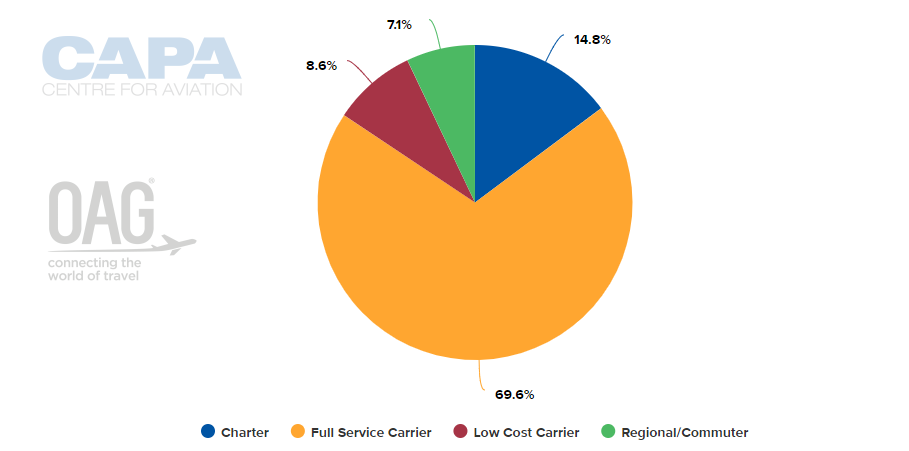This is not actually new for Pulkovo International and organisations speaking on behalf of the airport have made such representations in the past. The Smolny Region previously applied to Presidential Aide Igor Levitin in 2015 with a proposal to sign an Open Skies agreement for Pulkovo Airport, with the aim of increasing transit passenger traffic. It was estimated that signing the agreement would attract an additional 2.5 million passengers and 12 new carriers to the airport by 2018.
Included in these ongoing proposals has been a strategy to obtain fifth freedom rights for airlines using Pulkovo International to increase transit passenger traffic, although these also foundered as the Transport Minister at the time observed that if such rights were provided there was no sign of reciprocation from "foreign partners".
The Russian Association of Air Transport Operators (AEVT) issued a statement at that time (2015) on the risks involved in "opening up the skies" at Pulkovo International, warning that signing an Open Skies agreement would provide foreign carriers with a one-sided advantage over Russian carriers.
It is still not clear exactly what that meant. One interpretation is that as Saint Petersburg lies on intercontinental Europe - North Asia flight paths in a similar way to what Helsinki's Vantaa airport does and they could gain more benefit by operating a hub there, or simply by taking fifth freedom rights.
But that overlooks the success story of Russian carrier KD Avia at Kaliningrad, the oblast (enclave) between Lithuania and Poland, which operated a Europe-Russian Federation-CIS hub operation between 2005 and 2009 and which failed because of poor financial dealings rather than operational inefficiencies.
The same negativity was evident in a statement by the same organisation, AEVT, on 20-Jul-2019 in which it reiterated it does not support the proposal from Northern Capital Gateway (the operator of Pulkovo International) on the introduction of an Open Skies regime in Saint Petersburg, reaffirming that the initiative could negatively impact Russian carriers.
AEVT noted Russian carriers are experiencing difficult times due to the increasing cost of aviation fuel and airport charges, as well as bans on air services to countries including Egypt, Georgia and Ukraine. AEVT said the circumstances increase the competitive advantage of foreign carriers.
Tellingly, it also referred to such action "causing additional damage to economic activity." That is rather a strange take. Most airports would consider that any additional air service is more likely to stimulate economic activity. There are many consultants around the world working in the area of economic impact that would testify to that.
It would seemingly appear that the main concern in Russia is about well-organised foreign competition taking on airlines that are perhaps not so well organised. The country has been well protected. The proportion of seats that are on foreign airlines is just 14.6% right now. That compares with 48.8% in Germany, 43.5% in the UK and even 12.2% in the United States of America (USA).
CHART - Part of the reason for the low foreign participation in Russia is the continuing lack of low-cost carriers. Right now they provide just 8.6% of seats Source: CAPA - Centre for Aviation and OAG (data: w/c 29-Jul-2019)
Source: CAPA - Centre for Aviation and OAG (data: w/c 29-Jul-2019)
It is still the case that around half the air traffic generated in the Russian Federation begins and ends its journey in Moscow, at one of the four airports there. However, traffic has been growing steadily across the country, not only in Moscow.
Pulkovo International saw passenger levels increase +10.3% to 8.8 million in 1H2019. While that is less than half the +21.6% growth achieved in 2017, it does suggest it could yet go through the 20 million ppa barrier this year, the only airport outside of Moscow to do so.
CHART - Pulkovo International has seen double-digit year-on-year passenger growth on seven occasions this decade; this looks set to continue in 2019 Source: CAPA - Centre for Aviation and Saint Petersburg Pulkovo airport reports
Source: CAPA - Centre for Aviation and Saint Petersburg Pulkovo airport reports
One positive move influencing Pulkovo International is the decision by President Putin to allow entry using electronic visas for up to eight days at Saint Petersburg and Leningrad Oblast from 01-Oct-2019. Saint Petersburg is the President's home city.